Ditapis dengan
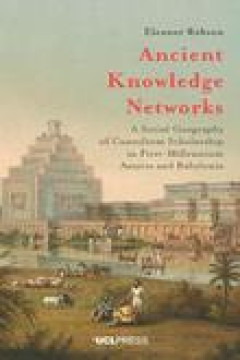
Ancient knowledge networks :a social geography of cuneiform scholarship in fi…
Ancient Knowledge Networks is a book about how knowledge travels, in minds and bodies as well as in writings. It explores the forms knowledge takes and the meanings it accrues, and how these meanings are shaped by the peoples who use it. Addressing the relationships between political power, family ties, religious commitments and literate scholarship in the ancient Middle East of the first m…
- Edisi
- -
- ISBN/ISSN
- 9781787355941
- Deskripsi Fisik
- XXIII, 314 p.
- Judul Seri
- -
- No. Panggil
- 935 ROB a
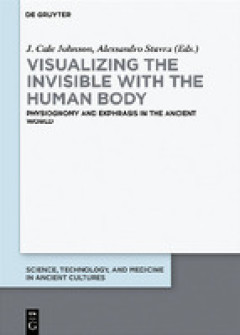
Visualizing the invisible with the human body :physiognomy and ekphrasis in t…
Physiognomy and ekphrasis are two of the most important modes of description in antiquity and represent the necessary precursors of scientific description. The primary way of divining the characteristics and fate of an individual, whether inborn or acquired, was to observe the patient’s external characteristics and behaviour. This volume focuses initially on two types of descriptive literatur…
- Edisi
- -
- ISBN/ISSN
- 9783110642698
- Deskripsi Fisik
- VI, 501 p.
- Judul Seri
- -
- No. Panggil
- 480 JOH v
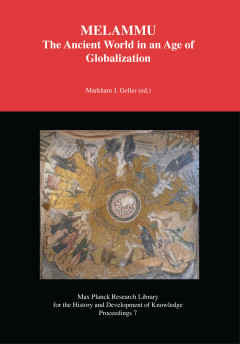
Melammu :the ancient world in an age of globalization
Melammu volumes have broadened the horizons of studies of antiquity by encouraging the crossing of geographical and cultural boundaries between ancient civilizations of the Mediterranean and Near East. The present Melammu volume extends from Greece to India, with articles on Phrygia and Armenia, also viewing texts from ancient Israel, Egypt, and Mesopotamia. The globalization described in this …
- Edisi
- -
- ISBN/ISSN
- 9783945561003
- Deskripsi Fisik
- XI, 385 p.
- Judul Seri
- -
- No. Panggil
- 900.42 MEL m

On Ancient Grammars of Space :Linguistic Research on the Expression of Spatia…
This volume presents new research by the Topoi group "The Conception of Spaces in Language" on the expression of spatial relations in ancient languages. The six articles in this volume discuss static and dynamic aspects of the spatial grammars of Ancient to Medieval Greek, Akkadian, Hittite, and Hieroglyphic Ancient Egyptian, as well as field data on eight modern languages (Arabic, Hebrew, Engl…
- Edisi
- -
- ISBN/ISSN
- 9783110311358
- Deskripsi Fisik
- xxvi, 327 p.
- Judul Seri
- -
- No. Panggil
- 401.9 KUT o
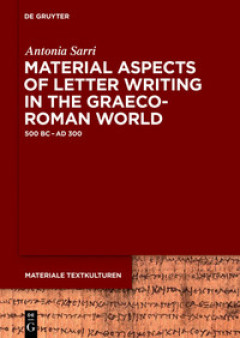
Material aspects of letter writing in the Graeco-Roman world, 500 BC-AD 300
Letter writing was widespread in the Graeco-Roman world, as indicated by the large number of surviving letters and their extensive coverage of all social categories. Despite a large amount of work that has been done on the topic of ancient epistolography, material and formatting conventions have remained underexplored, mainly due to the difficulty of accessing images of letters in the past. Tha…
- Edisi
- -
- ISBN/ISSN
- 9783110426953
- Deskripsi Fisik
- viii, 388 p.
- Judul Seri
- -
- No. Panggil
- 886.0109 SAR m

The ideologies of lived space in literary texts, ancient and modern
In a brief essay called Des espaces autres (1984) Michel Foucault announced that after the nineteenth century, which was dominated by a historical outlook, the current century might rather be the century of space. His prophecy has been fulfilled: the end of the twentieth century witnessed a ‘spatial turn’ in humanities which was perhaps partly due to the globalisation of our modern world. I…
- Edisi
- -
- ISBN/ISSN
- 9789038221021
- Deskripsi Fisik
- 256 p.
- Judul Seri
- -
- No. Panggil
- 800 KLO i

Lived religion in the ancient Mediterranean world
The Lived Ancient Religion project has radically changed perspectives on ancient religions and their supposedly personal or public character. This volume applies and further develops these methodological tools, new perspectives and new questions. The religious transformations of the Roman Imperial period appear in new light and more nuances by comparative confrontation and the integration of ma…
- Edisi
- -
- ISBN/ISSN
- 9783110557596
- Deskripsi Fisik
- VIII, 597 p.
- Judul Seri
- -
- No. Panggil
- 299 LIV l

Climate smart agriculture :building resilience to climate change
The book uses an economic lens to identify the main features of climate-smart agriculture (CSA), its likely impact, and the challenges associated with its implementation. Drawing upon theory and concepts from agricultural development, institutional, and resource economics, this book expands and formalizes the conceptual foundations of CSA. Focusing on the adaptation/resilience dimension of CSA,…
- Edisi
- -
- ISBN/ISSN
- 9783319611945
- Deskripsi Fisik
- xviii, 630p. : ill.
- Judul Seri
- -
- No. Panggil
- 338.1 CLI c

Legacies of space and intangible heritage :archaeology, ethnohistory, and the…
This volume looks at how different physical environments contribute to the reproduction of cultural forms even in the wake of colonization, migration, and other processes of displacement and change. This raises the question of whether cultural practices are altered by changes in physical environment or if a group’s narratives and practices shape their location. Using case studies from North a…
- Edisi
- -
- ISBN/ISSN
- 9781607325727
- Deskripsi Fisik
- IX, 249 p.
- Judul Seri
- -
- No. Panggil
- 973 AMS l

Man Bac :the excavation of a neolithic Site in northern Vietnam
The site of Man Bac in the Red River Delta of Vietnam, one of the most meticulously excavated and carefully analysed of Southeast Asian archaeological sites in the past few years, is emerging as a key site in the region. This book carefully analyses the human and animal remains and puts them into context. The authors describe in detail the health status, the unusual demographic profile and the …
- Edisi
- -
- ISBN/ISSN
- 9781921862236
- Deskripsi Fisik
- XIV, 231 p.
- Judul Seri
- -
- No. Panggil
- 959.701 MAT m
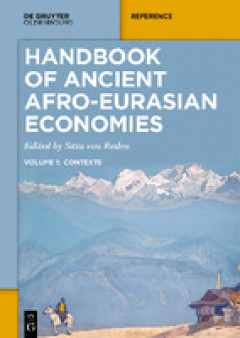
Handbook of ancient Afro-Eurasian economies :volume 1,. contexts
The notion of the “Silk Road” that the German geographer Ferdinand von Richthofen invented in the 19th century has lost attraction to scholars in light of large amounts of new evidence and new approaches. The handbook suggests new conceptual and methodological tools for researching ancient economic exchange in a global perspective with a strong focus on recent debates on the nature of pre-m…
- Edisi
- -
- ISBN/ISSN
- 9783110607741
- Deskripsi Fisik
- XII, 758 p.
- Judul Seri
- -
- No. Panggil
- 330.93 RED h

Material aspects of reading in ancient and medieval cultures :materiality, pr…
This publication seeks to endeavour the relationship between material artefacts and reading practices in ancient and medieval cultures. While the acts of reception of written artefacts in former times are irretrievably lost, some of the involved artefacts are preserved and might comprise hints to the ancient reading practices. In form of case studies, the contributions to this volume examine …
- Edisi
- -
- ISBN/ISSN
- 9783110639247
- Deskripsi Fisik
- VIII, 266 p.
- Judul Seri
- -
- No. Panggil
- 306 MAT m
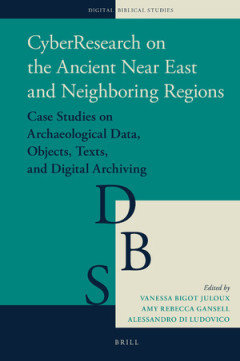
Cyberresearch on the ancient Near East and neighboring regions :case studies …
CyberResearch on the Ancient Near East and Neighboring Regions provides case studies on archaeology, objects, cuneiform texts, and online publishing, digital archiving, and preservation. Eleven chapters present a rich array of material, spanning the fifth through the first millennium BCE, from Anatolia, the Levant, Mesopotamia, and Iran. Customized cyber- and general glossaries support reader…
- Edisi
- -
- ISBN/ISSN
- 9789004375086
- Deskripsi Fisik
- xxviii, 458p. : ill.
- Judul Seri
- -
- No. Panggil
- 939.400285 CYB c

Early geometrical thinking in the environment of patterns, mosaics and isomet…
This survey confirms that one of the research trends in early geometrical reasoning has been a focus on creating a theoretical basis for research in this area. The main reason for the work on the theoretical foundations has been the fact that building geometrical concepts proceeds according to other regularities more than it takes place while building arithmetic knowledge. In this way, a broad …
- Edisi
- -
- ISBN/ISSN
- 9783319442716
- Deskripsi Fisik
- vii, 50 p. 42 illus.online resource.
- Judul Seri
- -
- No. Panggil
- 370 SWO e
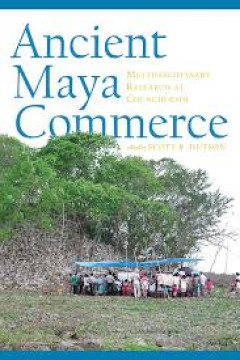
Ancient Maya commerce:multidisciplinary research at Chunchucmil
Nearly two decades of research at Chunchucmil, Yucatan, Mexico documented a thriving city of 40,000 people without the powerful kings and massive temples seen at other Maya centers. What brought people to this area, the driest in the Maya world, and how did they survive? Ancient Maya Commerce provides a pioneering study in economic anthropology, making the strongest case yet that ancient Maya e…
- Edisi
- -
- ISBN/ISSN
- 9781607325550
- Deskripsi Fisik
- xix, 376 pages : ill, maps ; 24 cm
- Judul Seri
- -
- No. Panggil
- 972.6 ANC a
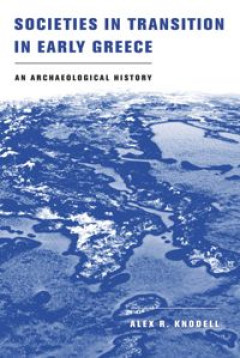
Societies in transition in early Greece :an archaeological history
Situated at the disciplinary boundary between prehistory and history, this book presents a new synthesis of Late Bronze Age and Early Iron Age Greece, from the rise and fall of Mycenaean civilization, through the "Dark Age," and up to the emergence of city-states in the Archaic period. This period saw the growth and decline of varied political systems and the development of networks that would …
- Edisi
- -
- ISBN/ISSN
- 9780520380547
- Deskripsi Fisik
- XV, 363 p.
- Judul Seri
- -
- No. Panggil
- 930.16 KNO s
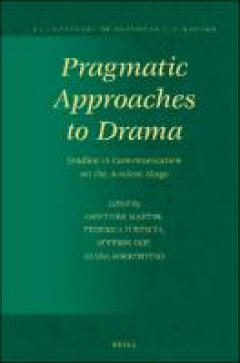
Pragmatic approaches to drama :studies in communication on the ancient stage
This volume collects papers on pragmatic perspectives on ancient theatre. Scholars working on literature, linguistics, theatre will find interesting insights on verbal and non-verbal uses of language in ancient Greek and Roman Drama. Comedies and tragedies spanning from the 5th century B.C.E. to the 1st century C.E. are investigated in terms of im/politeness, theory of mind, interpersonal pragm…
- Edisi
- -
- ISBN/ISSN
- 9789004440265
- Deskripsi Fisik
- XIII, 496 p.
- Judul Seri
- -
- No. Panggil
- 882.009 PRA p
Kaligrafi dalam Mushaf Kuno Nusantara
Berbagai sisi penting mushaf kuno Nusantara sampai saat ini belum banyak diteliti,5 baik menyangkut sejarah penulisannya maupun sisi visualnya, yaitu iluminasi dan kaligrafi. Keduanya sangat menarik untuk dikaji, namun penelitian ini hanya akan memfokuskan pada aspek kaligrafinya. Berdasarkan kajian sementara, kaligrafi dalam Mushaf secara umum terdiri atas empat bagian: (1) kaligrafi teks (na�…
- Edisi
- -
- ISBN/ISSN
- 9786237871248
- Deskripsi Fisik
- XIV, 100 p.
- Judul Seri
- -
- No. Panggil
- 091 AKB k
Serat Pustakaraja Purwa :Serat Darmasarana karya Pujangga R.Ng. Ranggawarsita…
Dalam kesastraan Jawa Baru terutama oleh pujangga R.Ng. Ranggawarsita, cerita dalam Mahābhārata Jawa Kuna yang digubah pada masa pemerintahan Ҫrī Dharmawangҫa Těguh Anantawīkramattunggadewa tersebut disadur kembali dengan berbagai adaptasi dan inovasi seperti yang tampak dalam Kitáb Pustakaraja Purwa. Kitáb Pustakaraja Purwa, seringkali dikatakan sebagai suatu penulisan baru mengenai …
- Edisi
- -
- ISBN/ISSN
- 9786237871170
- Deskripsi Fisik
- VIII, 262 p.
- Judul Seri
- -
- No. Panggil
- 091 TED s
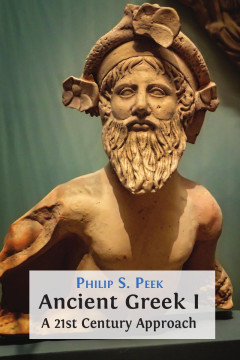
Ancient greek I :a 21st century approach
In this elementary textbook, Philip S. Peek draws on his twenty-five years of teaching experience to present the ancient Greek language in an imaginative and accessible way that promotes creativity, deep learning, and diversity. The course is built on three pillars: memory, analysis, and logic. Readers memorize the top 250 most frequently occurring ancient Greek words, the essential word end…
- Edisi
- -
- ISBN/ISSN
- 9781800642560
- Deskripsi Fisik
- xxiii, 610 p. : ill. ; 20.3 cm.
- Judul Seri
- -
- No. Panggil
- 488 PEE a
 Karya Umum
Karya Umum  Filsafat
Filsafat  Agama
Agama  Ilmu-ilmu Sosial
Ilmu-ilmu Sosial  Bahasa
Bahasa  Ilmu-ilmu Murni
Ilmu-ilmu Murni  Ilmu-ilmu Terapan
Ilmu-ilmu Terapan  Kesenian, Hiburan, dan Olahraga
Kesenian, Hiburan, dan Olahraga  Kesusastraan
Kesusastraan  Geografi dan Sejarah
Geografi dan Sejarah